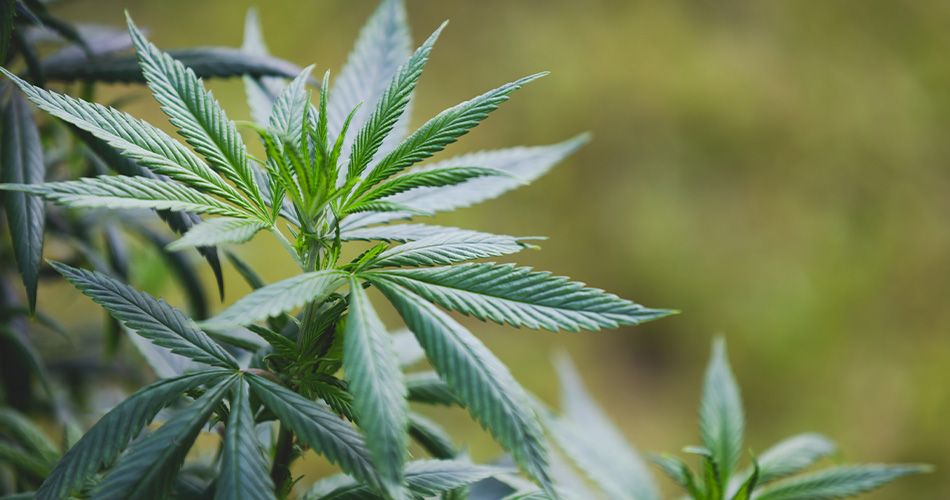Plenty of evidence suggests that recreational marijuana legalization can contribute to tobacco harm reduction efforts and public health

A new study published in the peer-reviewed Journal of Health Economics indicates that legalizing marijuana contributes to a decreased use of combustible tobacco cigarettes. Researchers who are based at Bentley University, San Diego State University, and Georgia State University drew on federal public health data from the Population Assessment of Tobacco and Health (PATH) administered by the U.S. Food and Drug Administration (FDA) and the National Institutes of Health (NIH). Other federal public health data also includes the National Survey on Drug Use and Health (NSDUH) administered by the Substance Abuse and Mental Health Services Administration (SAMHSA). The research team concluded that this particular study is “the first to comprehensively examine the impact of recreational marijuana legalization on tobacco use.”
Ever since the Surgeon General Advisory Committee on Smoking and Health released its very first report on smoking’s impacts on health in the United States, cigarette smoking rates dropped at a rate that is increasingly noteworthy. Paired with uptakes in adult electronic cigarette usage, marijuana consumption can help those who are suffering from tobacco-enabled nicotine dependence and other associated addictions. Marijuana can be consumed through various methods that do not involve smoking, such as vaporizers, edibles, and oils. This format includes tobacco-free vape liquids that are tobacco-free and are used as non-combustible means to eliminate or reduce exposure to the toxicity of combusted uses.
By providing a legal and actively regulated alternative to smoking, recreational marijuana legalization efforts, directly and indirectly, promotes harm reduction policy interventions that could see a wide scope of short- and long-term health promotion outcomes. This is done through a format that is enabled by offering these individuals a way to satisfy their craving desires without exposure to the well-documented dangers of tobacco cigarette smoking.

The researchers found evidence that is consistent with a voter’s adoption of state recreational marijuana laws that led to a slight uptick in cannabis use among adult users. Tobacco use trends did not follow that trend, the research states. This is due to the effect of substitution from cigarettes to legal recreational marijuana that drives legalization efforts across the country. In a simpler context, if marijuana becomes legally available for recreational use, those who would otherwise consume tobacco products may choose to substitute or reduce their cigarette tobacco use with marijuana.
The substitution effect, in the context of addiction, refers to the phenomenon where individuals replace one addictive substance or behavior with another in order to further satisfy their cravings or dependency. It involves the shift from one addictive substance, such as alcohol or drugs, to another, or from one addictive behavior, such as gambling or compulsive shopping, to another.
The substitution effect often occurs when an individual tries to overcome their addiction to a particular substance or behavior without addressing the underlying issues that contribute to their addictive tendencies. Instead of addressing the root causes or seeking appropriate treatment, they find alternative ways to fulfill their cravings due to dependencies and the actual addictions.
Marijuana Moment journalist and editor Ben Adlin, reporting on the study recently, pointed out that researchers showed that “we find no evidence that [the] legalization of recreational marijuana increases adult tobacco use. The preponderance of the evidence suggests that [recreational marijuana laws] adoption is associated with a small, lagged decline in tobacco use.” Marijuana use also doesn’t extend to tobacco use. Recreational marijuana laws are also associated with a lagged reduction in ENDS use that is also “consistent with the hypothesis that ENDS and marijuana are substitutes” to smoking tobacco cigarettes and other combustible products. Recreational marijuana legalization often goes hand in hand with programming public health education campaigns and issuing regulations aimed at promoting responsible consumption.
The researchers added that “the results…provide some support for the hypothesis that tobacco use declined in several of the earliest adopting states, most notably in Colorado and Washington, which are also those states that saw the largest increases in marijuana use following [recreational marijuana legalization] enactment.” By leveraging the momentum created by marijuana legalization, public health messaging can extend its reach to address tobacco-related issues. Educational initiatives can raise awareness about the health risks of tobacco smoking, emphasize all of the benefits of reducing or quitting tobacco use, and inform individuals about the availability of legal marijuana regulation as a potentially less harmful recreational alternative. Also, keep in integrating tobacco harm reduction messages within marijuana legalization efforts, public health agencies can effectively reach a broader audience and promote healthier choices. This is crucial in hindsight. In my last column for Vaping Post, I wrote about how there is a public interest in removing cannabis and cannabis derivative products from the Schedule I narcotics list maintained by the federal Drug Enforcement Administration and the Controlled Substances Act of 1970. I’ve also reported extensively for this news publication on the public support for legalization across the whole United States.

An overwhelming share of adult voters in the United States are in support of legalizing marijuana for either medical or recreational uses, data from Pew Research Center concluded — 88 percent. In the same data, 59 percent believe that it should be openly legal across the country. 30 percent should be legal only for medical use. Only one in ten believe that marijuana use should not be legal. This is high acceptance and tolerance for a drug that was once linked to so-called “reefer madness.” Ted Van Green, a Pew research analyst, wrote about the polling results of this survey in November 2022. Green wrote that this came after the Democratic President Joe Biden announced his decision to pardon federal convictions for simple federal marijuana possession offenses, like District of Columbia criminal code offenses, and doesn’t apply to state- and local-level marijuana convictions. Aligning regulations for both marijuana and tobacco use can support a governmental approach to harm reduction while ensuring that legal consumers are adequately informed about the risks of tobacco and cannabis.
This coordinated regulatory oversight can additionally facilitate the monitoring and control of tobacco sales, reducing access to underage individuals and encouraging responsible consumption.











